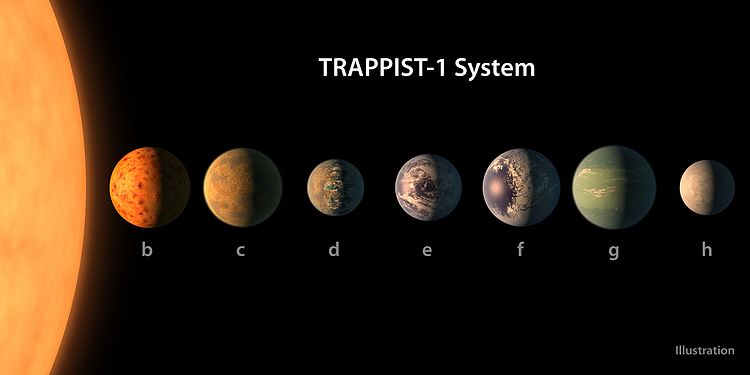NASA announces discoveries of 7 new planets in Aquarius Constellation
Have you ever wondered what could be outside of this solar system? Recently, this question can be partially answered as NASA has released information, including the announcement of a brand new solar system. Within the Aquarius Constellation, seven new planets have been discovered; within the seven planets, three have been predicted habitable for life.
Just like this solar system orbits around the sun, these planets orbit a central star NASA calls “TRAPPIST-1.” Their “sun” is estimated to be approximately as big as Jupiter, which is about 43,000 miles around the surface. Compared to this sun, which is measured to be about 430,000 miles along the surface. This being said, TRAPPIST-1 is slightly larger than Jupiter, making it over 100,000 miles smaller than this sun.
TRAPPIST-1 first earned the name after being identified by the Belgian-operated telescope in Chile. This telescope is meant to find planetary systems and is used in many different ways. One use for this telescope is to study planets orbiting distant stars that normal technology couldn’t.
Since TRAPPIST, the telescope can’t get a close enough look at the surface of the newly-discovered planets, a different scope is being launched into outer space. The James Webb Space Telescope will be launched into space in October 2018. This will be launched from the Ariane 5 launcher contributed to Europe. Ariane 5 has an increasingly successful record of positive launches over the past 11 years.
NASA has high expectations in what they will find when the telescope is close enough to make new discoveries. All seven planets live within the habitable zone of their sun; therefore, NASA believes that each planet could have liquid water. That being said human life could be sustainable on each planet, especially the planets closest to the sun.
With the new advancements on Earth, there are optimist outlooks on what could happen in the future of science. Over time humans have evolved, and so has the science that continues to make progressions that keep the eyes of the people wide. Within the next hundreds of years, humans could one day step foot onto one of these newly-discovered planets because of the science that carries this world on.



